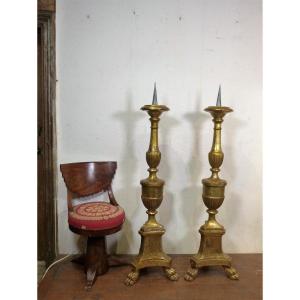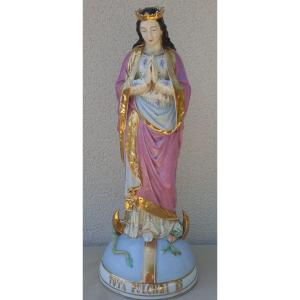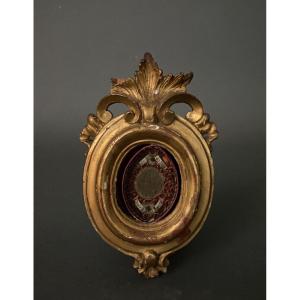With contrasting marks, it is missing.
Silver colored shell, with naturalistic details, and a top with a cartouche (on which there is an engraved element) and a simplified plant shape on one side (the symmetry of this is missing). The contrasting marks are in what would be the "ears" or "ear pendants". A numerical mark is visible on the outside. Inside, punches identify the piece as having been manufactured in the Spanish city of Toledo, at the time when Diego Rodríguez de Lezama (or Lizana) worked as a puncher, to whom the mark on the other ear belongs. The third mark, located below the location mark, identifies the piece as having been made by Manuel García Reina, born around 1706 in Colmenar Viejo and trained in Madrid with Juan Löpez Sopuerta. He settled in Toledo around 1730, where he perfected his skills with Manuel Vargas Machuca, and entered San Eloy in 1733. He was an approver in 1747 and 1755, and it is known that he had a shop since at least 1743 and is documented until 1772. Diego Rodríguez de Lizana or de Lezana was born in Bargas (Toledo) and trained with Juan de Jarauta, joining the brotherhood of San Eloy of Toledo in 1699. He was an approver of the guild in 1715 and 1718, and worked as a contrastant between around 1730 and his death in 1751 or 1754. His works are preserved in San Pedro Mártir, in the parish church of Miguelturra (Ciudad Real), in the cathedral of Lérida, etc. His work is preserved in Santo Domingo el Real, some cruets in the museum of Santa Cruz de Toledo, in the parish of los Yébenes, etc.
Weight: 98 grams. - Dimensions: 11x12x4 cm




































 Le Magazine de PROANTIC
Le Magazine de PROANTIC TRÉSORS Magazine
TRÉSORS Magazine Rivista Artiquariato
Rivista Artiquariato